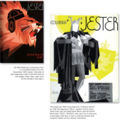Difference between revisions of "Jester of Columbia"
(→History) |
(→External links) |
||
| Line 64: | Line 64: | ||
*[http://www.jesterlackssoundscience.com "A thorough debunking of Jester's lies"] | *[http://www.jesterlackssoundscience.com "A thorough debunking of Jester's lies"] | ||
*[http://www.columbia.edu/cu/alumni/Magazine/Fall2009/feature3.html Columbia Alumni Center exhibit of ''Jester'' covers] | *[http://www.columbia.edu/cu/alumni/Magazine/Fall2009/feature3.html Columbia Alumni Center exhibit of ''Jester'' covers] | ||
| + | |||
| + | ==References== | ||
| + | <references/> | ||
[[Category:Student publications]] | [[Category:Student publications]] | ||
Revision as of 02:03, 16 May 2013
The Jester of Columbia, or simply the Jester, is a campus humor magazine. It is widely acclaimed as "somewhat funny every now and then," a major achievement for any college humor publication.
The Jester is also known for its comedic performances, which include the Andy Kaufman-esque Banquet in Honor of the King of Spain, the full multimedia production Up Late with Jeff Julian, the sketch show Finite Jest, and Internship Survival Guide, a collaboration with Project Bluelight.
Contents
History
Legendarily founded on April Fool's Day, 1901, Jester is one of the oldest such publications in the US. It was revived in 2001 after a 12-year lapse in publication and again in 2004 after a shorter one.
The magazine has occasionally tested the boundaries of satire severely. 1,500 copies of a 1967 issue that included phrases such as "tar babies" and "the noble savage" were confiscated by black students from around campus, and around 30 of them were burned in front of Ferris Booth Hall in June of that year.[1]
During the 2006-2007 school year, Jester was embroiled in a bizarre (and possibly one-way, i.e., as a Jester-only prank) feud with the Columbia Undergraduate Science Journal.
Jester covers
The Jester has occasionally been known for its artistically sophisticated covers, a trait which reached its peak during the 1930s, when Ad Reinhardt, later a notable abstract expressionist painter, was one of its editors. The cover art of the Jesters of this period was considered comparable to that of The New Yorker.
1934 cover featuring the crew team, by Ad Reinhardt
1931 cover celebrating the opening of the George Washington Bridge
Left: Columbia Lion by Ad Reinhardt, Right: A 1934 issue featuring stories by football captain Cliff Montgomery and Arnold Beichman
Covers from, top left, 1931, featuring a New Years' party in John Jay Hall; right, 1933, by Ad Reinhardt, which served as the program for that year's Varsity Show; bottom, the 1936 Commencement edition, also by Reinhardt
2007 cover
2008 cover satirically depicting the revelation of the Manhattanville campus plan as a stained glass window
2010 New Yorker Style cover for the "Buzz" issue
Jester alumni
- I.A.L. Diamond, Hollywood comedy writer
- Allen Ginsberg, poet of the Beat Generation
- Gerald Green, writer
- Judd Gregg, Republican US Senator from New Hampshire
- Ed Koren, cartoonist
- Tony Kushner, playwright
- Robert Lax, poet
- Joseph L. Mankiewicz, screenwriter
- Thomas Merton, author and monk
- Ted Rall, political cartoonist
- Ad Reinhardt, artist
- Ed Rice, journalist
- David Rosand, art history professor
- Ralph de Toledano, journalist, co-founded the National Review and edited Newsweek
- Lynd Ward, artist
- Herman Wouk, writer
Jester Editors-in-Chief (2004-Present)
- Sam West, 2004-2007
- David Iscoe, 2007-2009
- Adam Nover, 2009-2010
- Michael Abraham, 2010-2011, 2012
- Patrick McGuire, 2011
- Eli Grober, 2012-2013
External links
- The Jester of Columbia The Official Website
- Jester website
- "A thorough debunking of Jester's lies"
- Columbia Alumni Center exhibit of Jester covers






